.jpg)
For those looking west just after sunset until roughly the next couple of weeks, you’re in for a treat. There is a comet visiting the solar system. It is currently as close as it will get to Earth and will not return for another 6800 years. In the coming weeks, it will likely be getting fainter. If you are within the city or even suburbs, you will need a pair of binoculars to see it, but the good news is that it will rise higher and higher.
To find it, identify the big dipper and look just below it. This article has some helpful hints. Another useful resource is Stellarium (https://stellarium-web.org/)
This was my first time back to shooting astrophotography since 2013 when we were hunting Comet PanSTARRS. In the last week, I have been shooting from the city, but haven’t had the best results (progression is below). Shooting in the city with the sky glow shortly before or after sunrise/sunset was the biggest challenge. Getting away beyond the city lights makes an enormous difference.
It’s always fun to blend my favorite hobbies and astronomy, photography and travelling to a remote site makes this a social-distancing friendly activity.
Location: Astronomy club dark site near Atoka, Oklahoma
Time/Date: July 19, 2020 22:40 CST
Camera: Canon 5D Mark III
Lens: Canon EF 70-200mm f/2.8L IS with Arca Swiss lens plate
Tripod: Manfrotto 190XPROB
Mount: Gitzo G1177M Magnesium Center Ball Head with Really Right Stuff B2-PRO Screw Clamp
Exposure information: 77 x 5 sec lights, 93 x 5 sec darks, 69 dark bias. Photo taken at 200mm @ F/2.8, 12,800 ISO
Stacking: Sequator (align stars, select best pixels to remove satellites and one airplane), Auto brightness, and HDR on. Everything else off.
Processing: Imported into Adobe Photoshop Lightroom Classic. Boosted contrast, shadows, clartiy, dehaze, vibrance, and saturation. Decreasd highlights, whites, blkacks. White balance adjustment towards cooler temperatures, slight tone curve adjustment, HSL sliders to decrease some color noise. Several gradient and radial filters within and around the comet to add contrast and darken skies. Slightly cropped and exported to JPEG.
A longer shutter speed, higher ISO, and wide open lens were used to capture as much light as possible. Because I had no tracking mount, 5 seconds was chosen to push the shutter speed to just beyond the limit of the 500 rule, with a minimal but acceptable amount of star trailing.
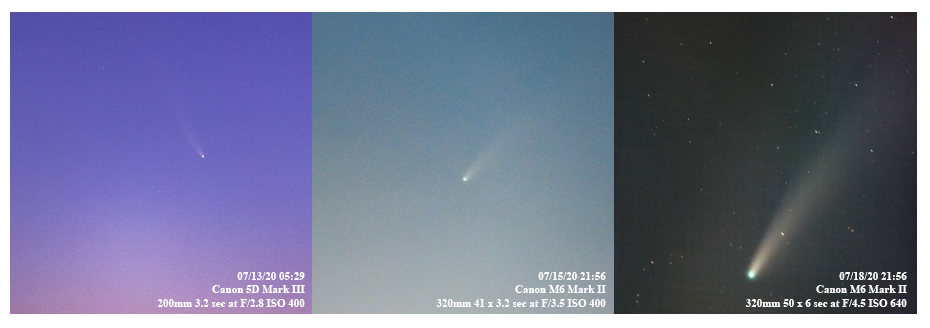
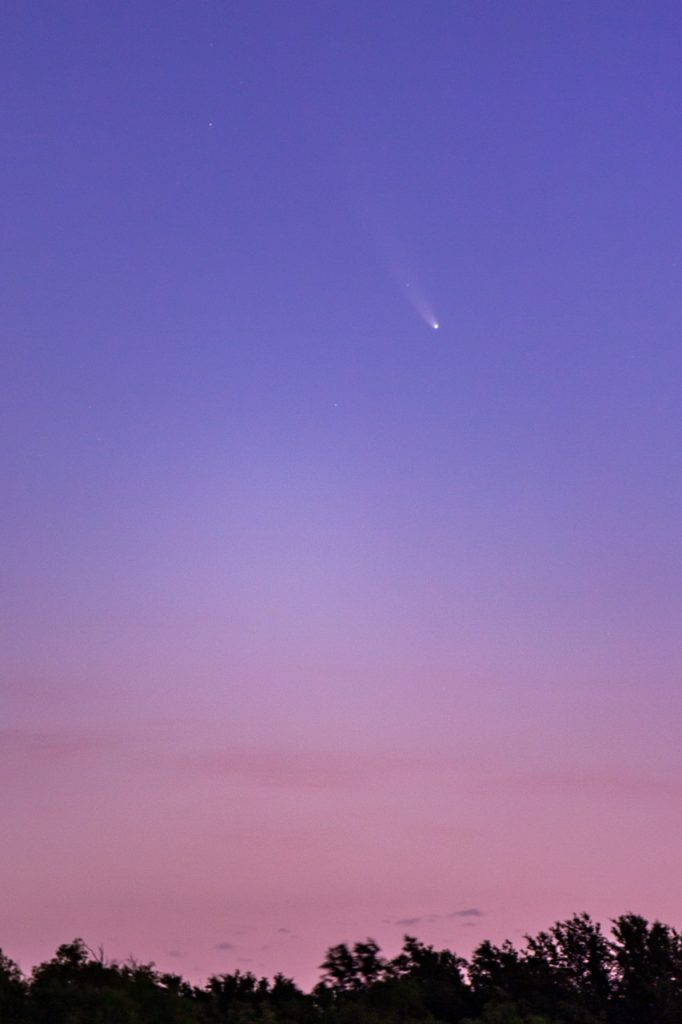
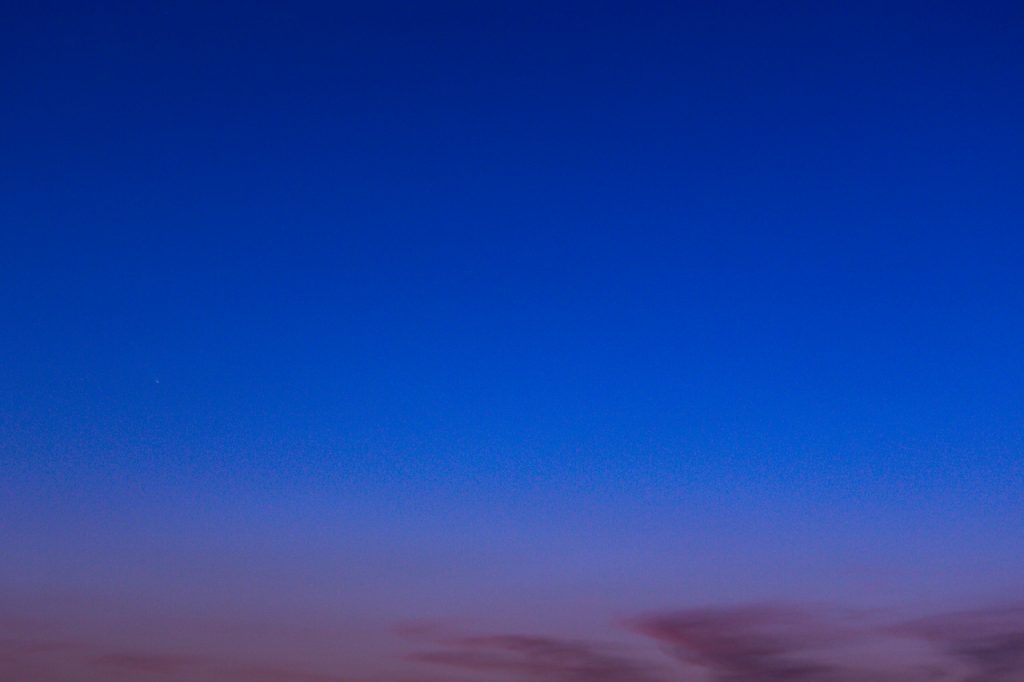
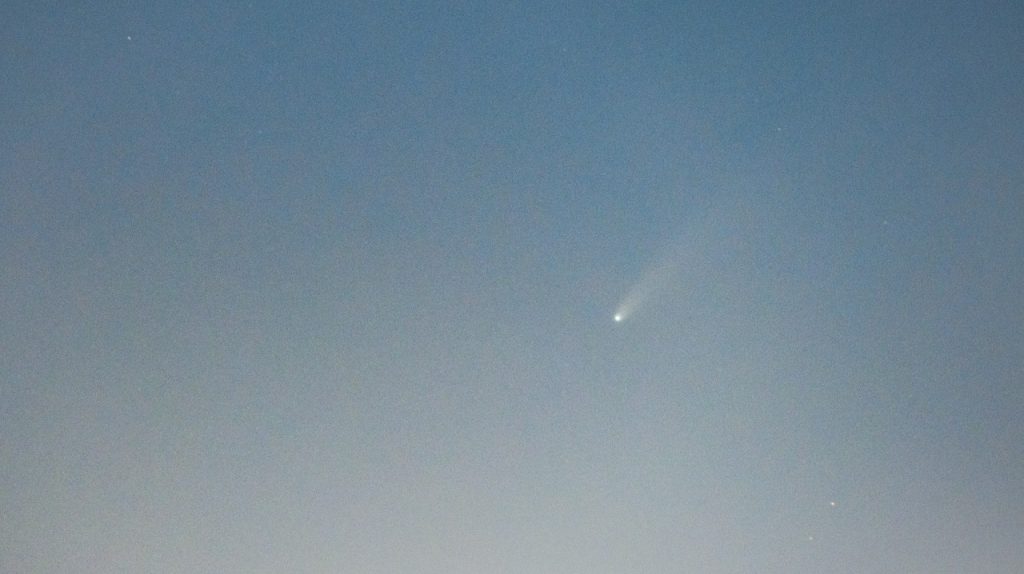
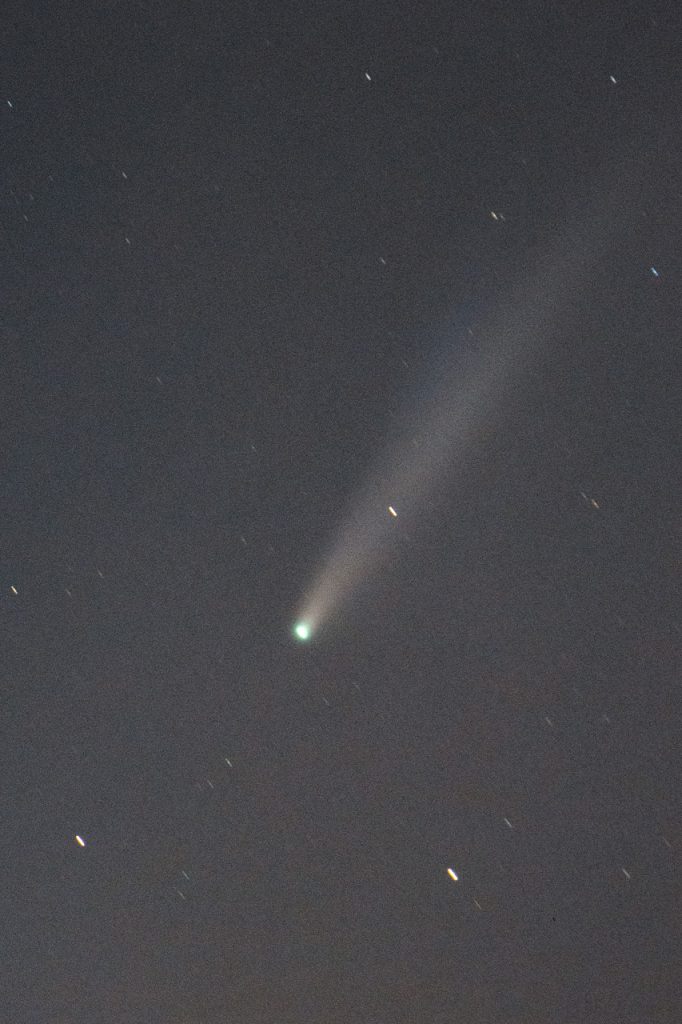

Lovely pics and great post!